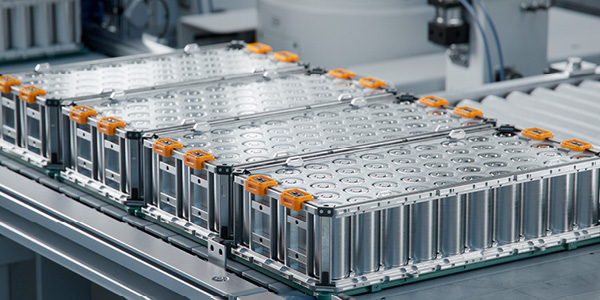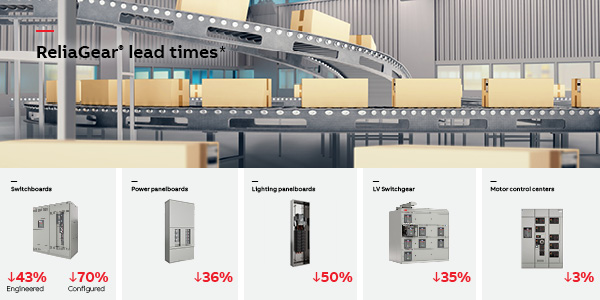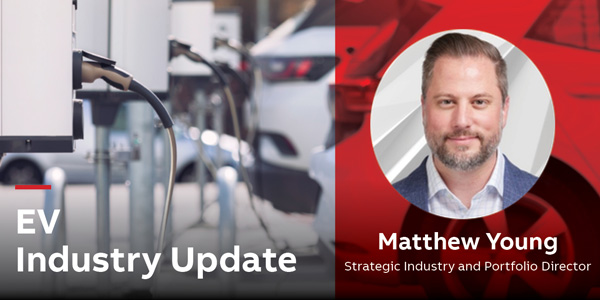—
Encounter Distributor News

Local commitment. Greater success.
The journey of innovation and excellence
From the recent additional $110 million U.S. investment announcement to introducing SACE® Emax 3, the next innovation of our flagship air circuit breaker, to achieving best-in-class on-time delivery performance for switchboards, power panelboards, modular metering and busway, ABB Electrification is tirelessly committed to our distribution channel partners.
—
Past Issues
2025
Q2

Boost your business at the speed of now
In the electrical distribution industry, speed matters. ABB’s fast fulfillment EXcelerate and Merchandised products programs enable you to deliver solutions with ease and efficiency, helping to make you the go-to source for customers racing to deliver on — or take on — projects with tight timelines.
If prioritizing shorter lead times, increasing customer responsiveness or building their trust are top of mind, the EXcelerate and Merchandised products programs are ideal to help keep your customers’ projects moving along and sustain confidence in your ability to meet their project needs.
Q1

Elevating success through collaborative partnerships
Deeper relationships, higher growth, powered by our partnership is more than a tagline. It’s our commitment to our valued distributor partners.
We see you as an extension of our own team. We invest in your capabilities by providing access to the latest technology innovations, collaborate to solve customer challenges and share expertise so we can all succeed in the quest to electrify the U.S.
2024
Issue 12

Powering forward with appreciation and innovation
As 2024 races towards the finish line, we at ABB want to express our sincere appreciation for your partnership. This year may have seemed like it flew by, but our commitment to innovation is lasting. We celebrate delivering a range of groundbreaking new products designed to empower your business and propel it forward.
Issue 11

Issue 10

ABB ReliaHome™
For all that matters.
ReliaHome is the new innovative, comprehensive residential portfolio under the ABB brand. From circuit and surge protection to energy distribution and load management, ReliaHome residential products make homes reliable, with products that are easy to order, stock and install.
Issue 9

Issue 8

Safeguard your customers against power disruptions
In a world driven by technology, we understand the importance of uninterrupted power. But what happens when your customer’s power goes out unexpectedly? In some cases, even a minimal interruption in the power supply can damage equipment, cause data loss, disruption of critical communication channels or disrupt lifesaving systems.
Issue 7

Tap into the booming battery manufacturing market
With industries like electric vehicles, energy storage, industrial equipment, medical devices and consumer electronics driving increased demand, the battery manufacturing industry’s projected compounded annual growth rate (CAGR) from 2022–20321 is anticipated to be 20.1%.
Issue 5

Investments driving ReliaGear® product fulfillment improvements
Unprecedented demand and disrupted global supply chains have been consistent across many industries, including ours, since 2021. As a result, industry-wide outputs have not kept pace with demand, adversely affecting the customer experience with extended lead times and increased backlogs.
Issue 4

Industry Update
Matthew Young, Strategic Industry and Portfolio Director
The electric vehicle (EV) market is experiencing explosive growth, with industry reports indicating a year-over-year increase in U.S. sales of 50% in 2023. This surge translates to a massive opportunity for the electrical industry, especially in the form of ever-increasing EV charging infrastructure.
Issue 3

Issue 2

Help increase your sales in the multi-family market with a full line of solutions
Despite the recent growth in residential construction, the U.S. faces a significant structural housing shortage, estimated at 3.8 million units. This gap underscores a critical challenge. While population and household formation are increasing — with rates of 1.9 million versus 1.0 million in the early 2000s — the country isn't building houses as swiftly as it once did. Residential industry analysts predict a sustained need for millions of new units, both single- and multi-family, in the coming years. Yet, contractors face a major hurdle in lengthy lead times for electrical equipment. This is where ABB steps in as your partner in success.
Issue 1

A year of innovation and growth sets the stage for 2024
Despite the challenges the electrical industry and world faced the last few years, including a global pandemic, ABB Electrification made significant strides in 2023 and is in a strong position as a company and brand. Our commitment to electrifying the US with innovative products and solutions, a robust sales organization and an ever-growing chest of support resources and tools is bearing real fruit. At the core of this evolution is our dedication to meeting the needs of our valued distribution channel partners and of the markets we serve.


